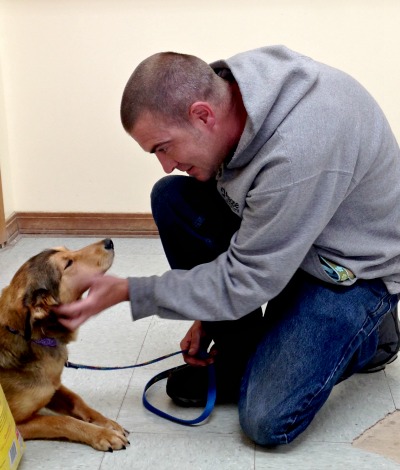 That horrible panic feeling is overwhelming when your favorite pet gets lost. Maybe you just gave her a bath and hadn’t put her collar and tag back on. Maybe your child’s friend accidentally left the gate open and away your dog went. Maybe a delivery person left the door open a few minutes too long and out went the cat. It can happen to anyone. Even the very best animal lovers have had pets go missing.
That horrible panic feeling is overwhelming when your favorite pet gets lost. Maybe you just gave her a bath and hadn’t put her collar and tag back on. Maybe your child’s friend accidentally left the gate open and away your dog went. Maybe a delivery person left the door open a few minutes too long and out went the cat. It can happen to anyone. Even the very best animal lovers have had pets go missing.
One of the most effective ways to ensure your lost pet makes it back home is to have him microchipped.
A microchip is a small electronic chip enclosed in a glass cylinder that contains a unique code. That code links your pet to you through a registration database. The microchip is about as big as a large grain of rice and is injected under the skin between the shoulder blades of your dog or cat.
If your pet goes missing veterinary offices and animal shelters can scan your pet for a microchip. If a chip is found, the shelter or veterinarian will call the registry to retrieve your contact information. Then it’s just a matter of a phone call and you will be reunited with your pet. It’s that simple! Of course, you want to be sure to keep your contact information current, so if you move or change your phone number, let the shelter or registry know.
Microchips are safe for use in dogs and cats. According the American Veterinary Association the benefits of microchipping animals definitely outweigh the risks. Some countries are even beginning to require that dogs be microchipped.
Microchips can be implanted by a veterinarian or at a shelter. It is a simple procedure, much like getting a vaccination shot. No anesthetic is required and there is little discomfort during the procedure.
 A study of more than 7,700 stray animals at animal shelters showed that dogs without microchips were returned to their owners 21.9% of the time, whereas microchipped dogs were returned to their owners 52.2% of the time. Cats without microchips were reunited with their owners only 1.8% of the time, whereas microchipped cats went back home 38.5% of the time. (Lord et al, JAVMA, July 15, 2009) For microchipped animals that weren’t returned to their owners, most of the time it was due to incorrect owner information in the microchip registry. Registering the microchip after it is implanted is as important as getting the microchip in the beginning.
A study of more than 7,700 stray animals at animal shelters showed that dogs without microchips were returned to their owners 21.9% of the time, whereas microchipped dogs were returned to their owners 52.2% of the time. Cats without microchips were reunited with their owners only 1.8% of the time, whereas microchipped cats went back home 38.5% of the time. (Lord et al, JAVMA, July 15, 2009) For microchipped animals that weren’t returned to their owners, most of the time it was due to incorrect owner information in the microchip registry. Registering the microchip after it is implanted is as important as getting the microchip in the beginning.
Although microchips are very helpful in reuniting you with your lost pet, it is also important to keep an identification tag on your pet. Microchips are tamper-proof permanent identification, but nothing replaces up-to-date identification tags for quickly reuniting you with your pet. However, if a collar with a tag slips off your lost pet, the microchip is the only way a pet’s owner can be found.
For more tips on what to do if your pet is lost, check out our lost and found page.
